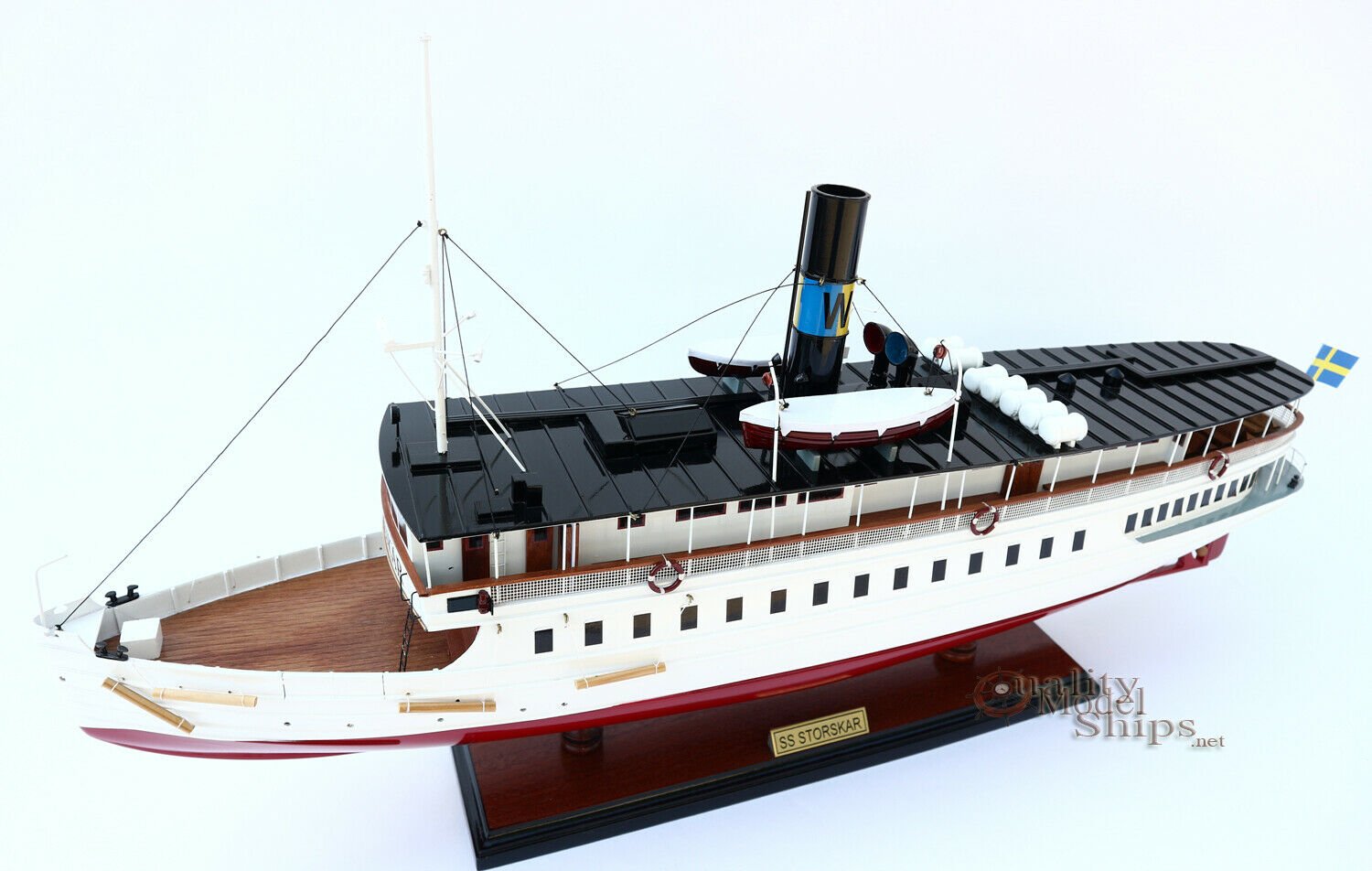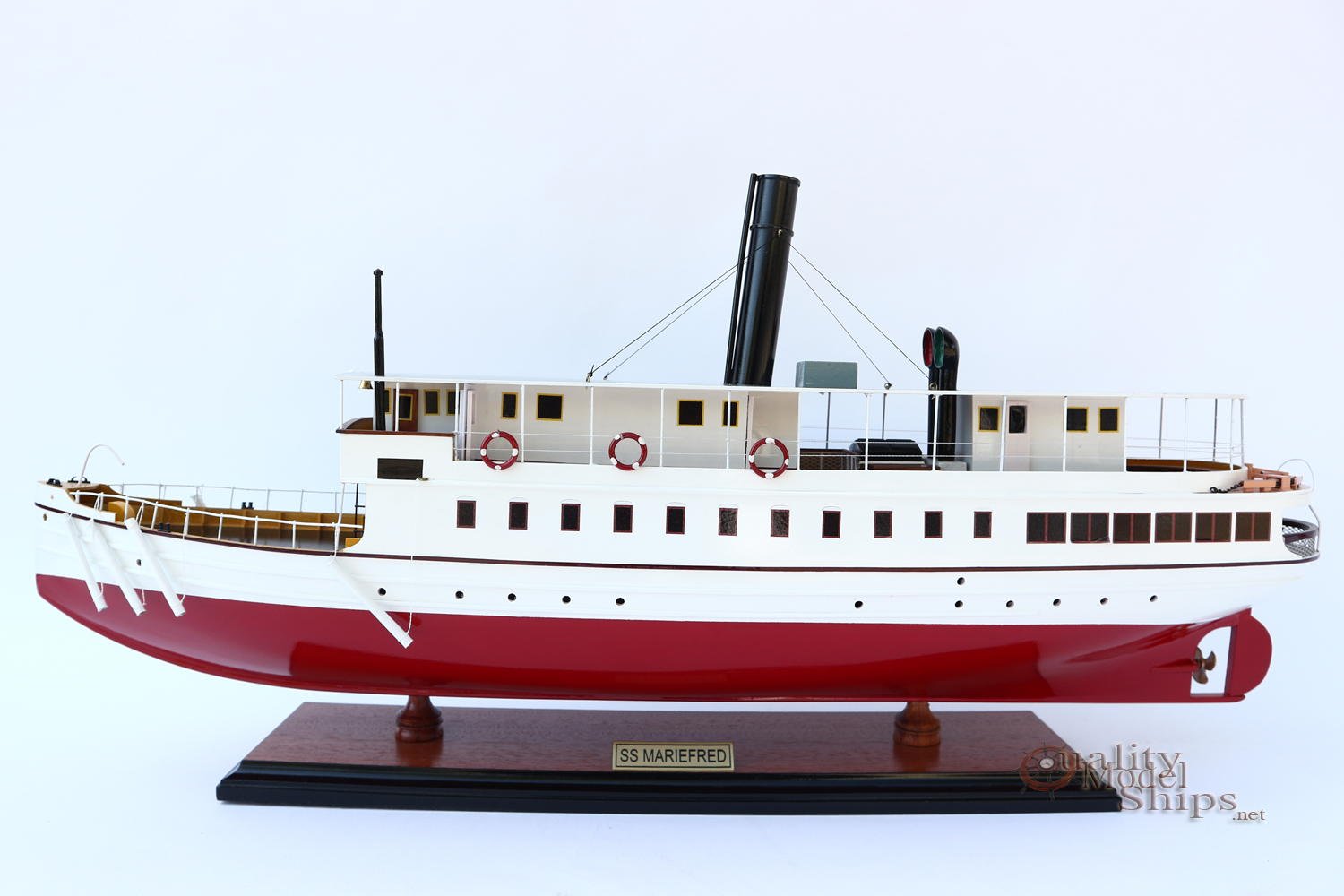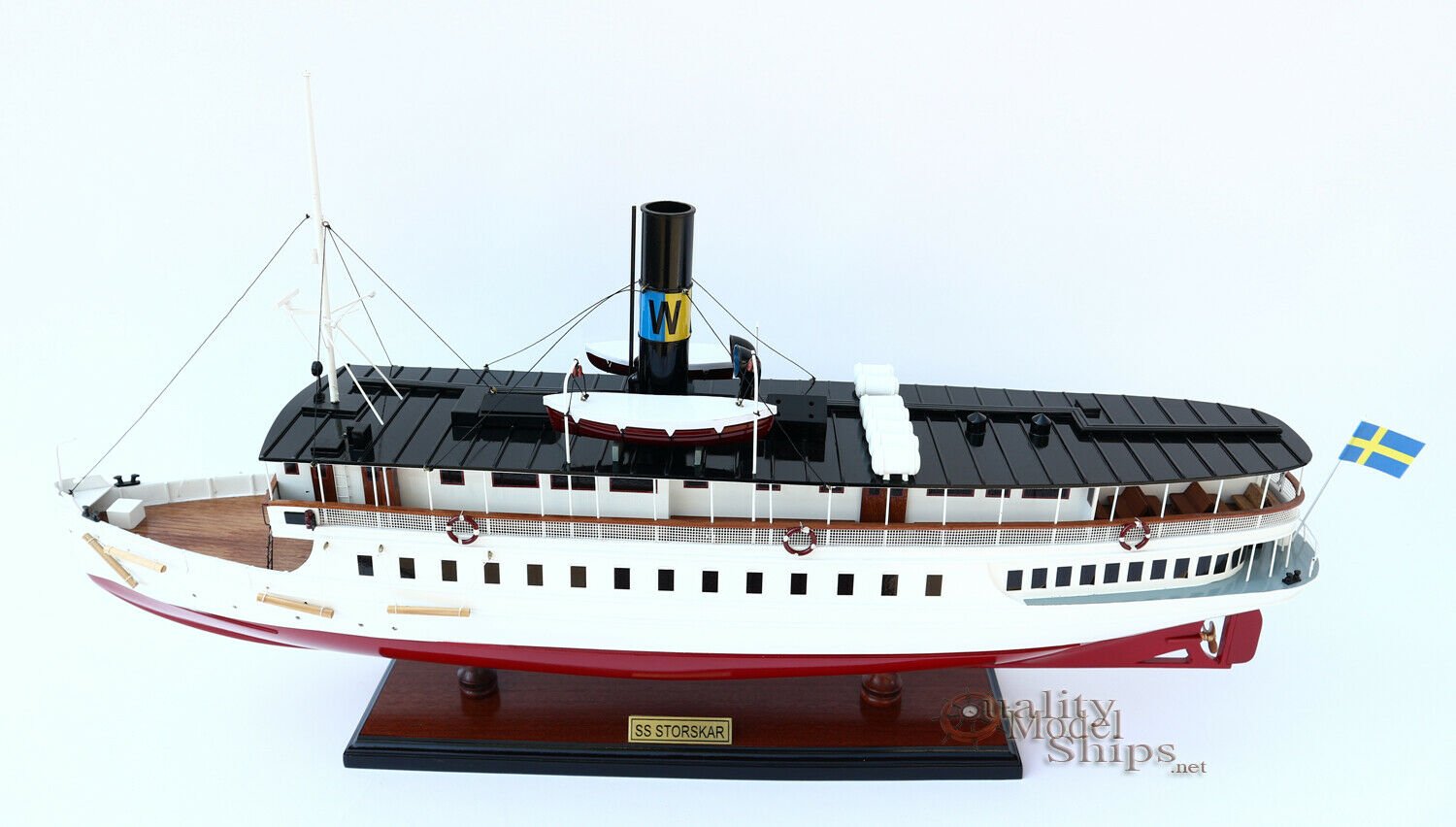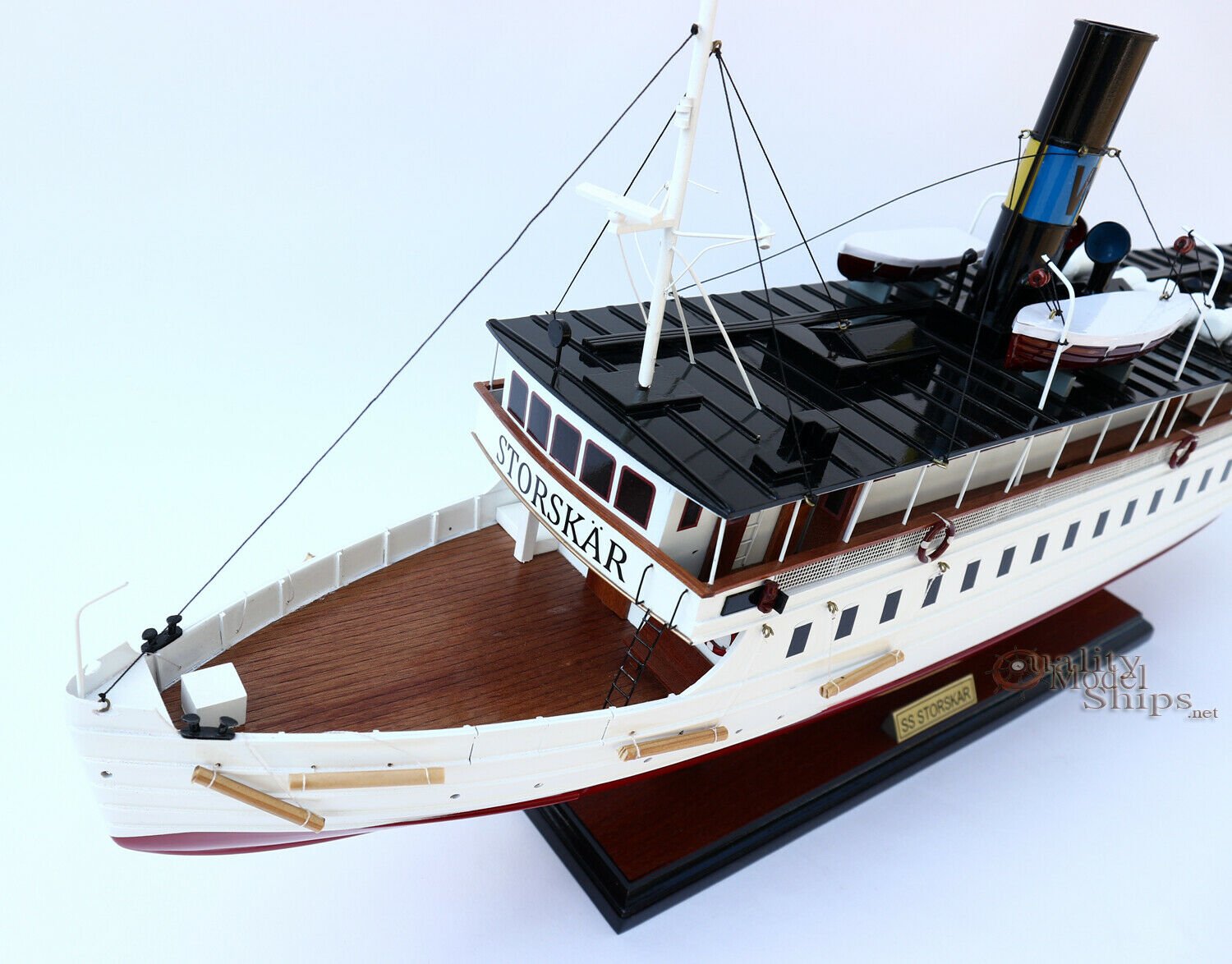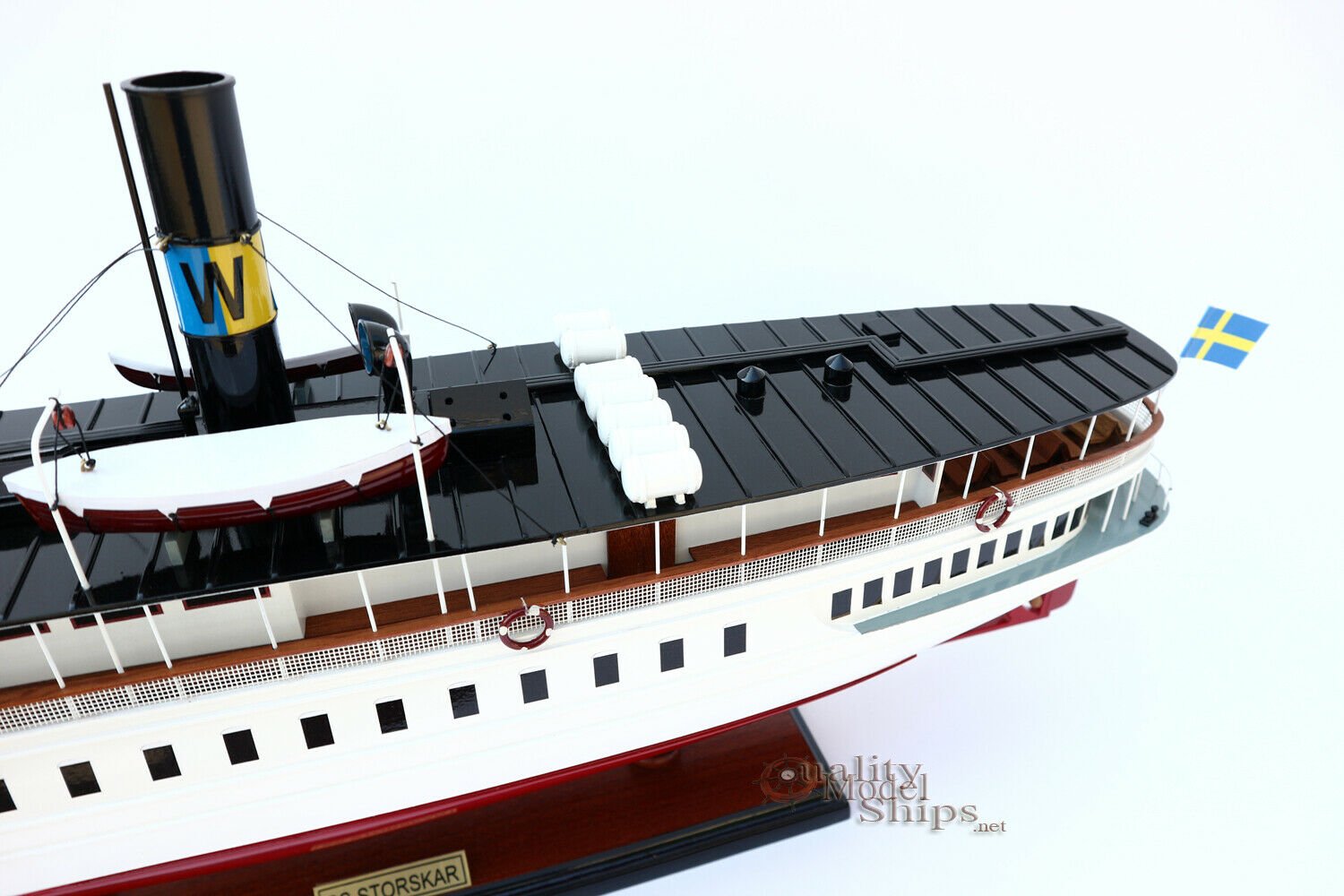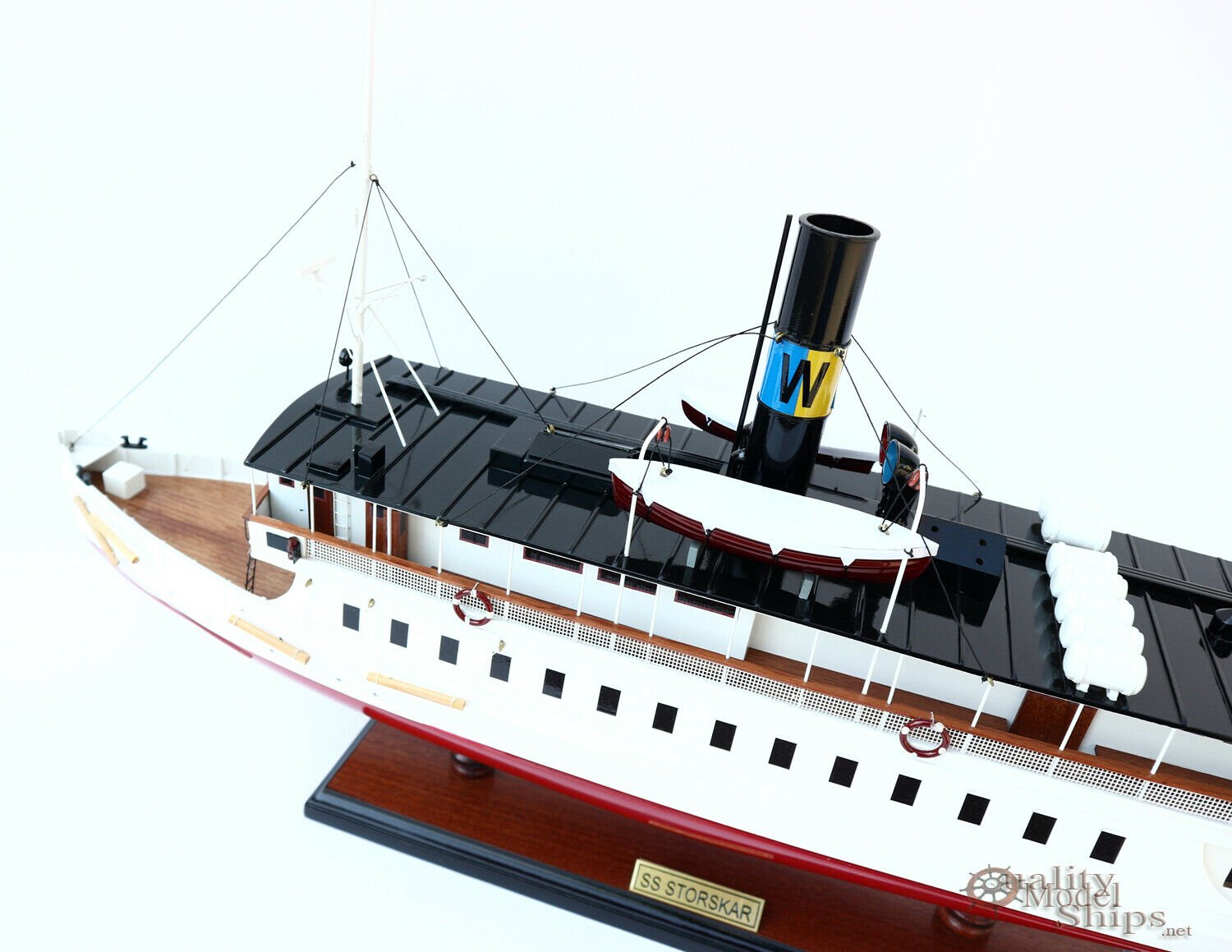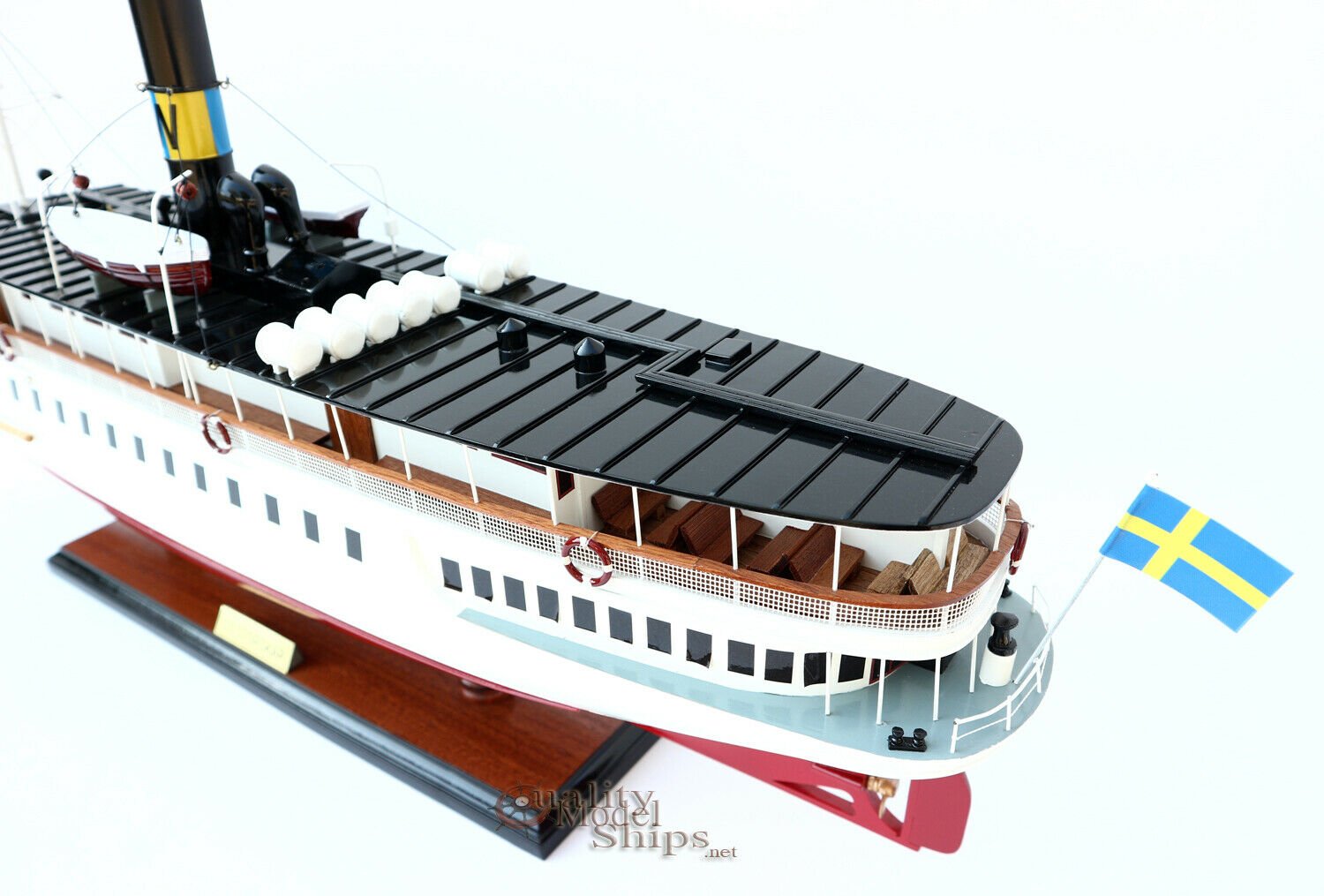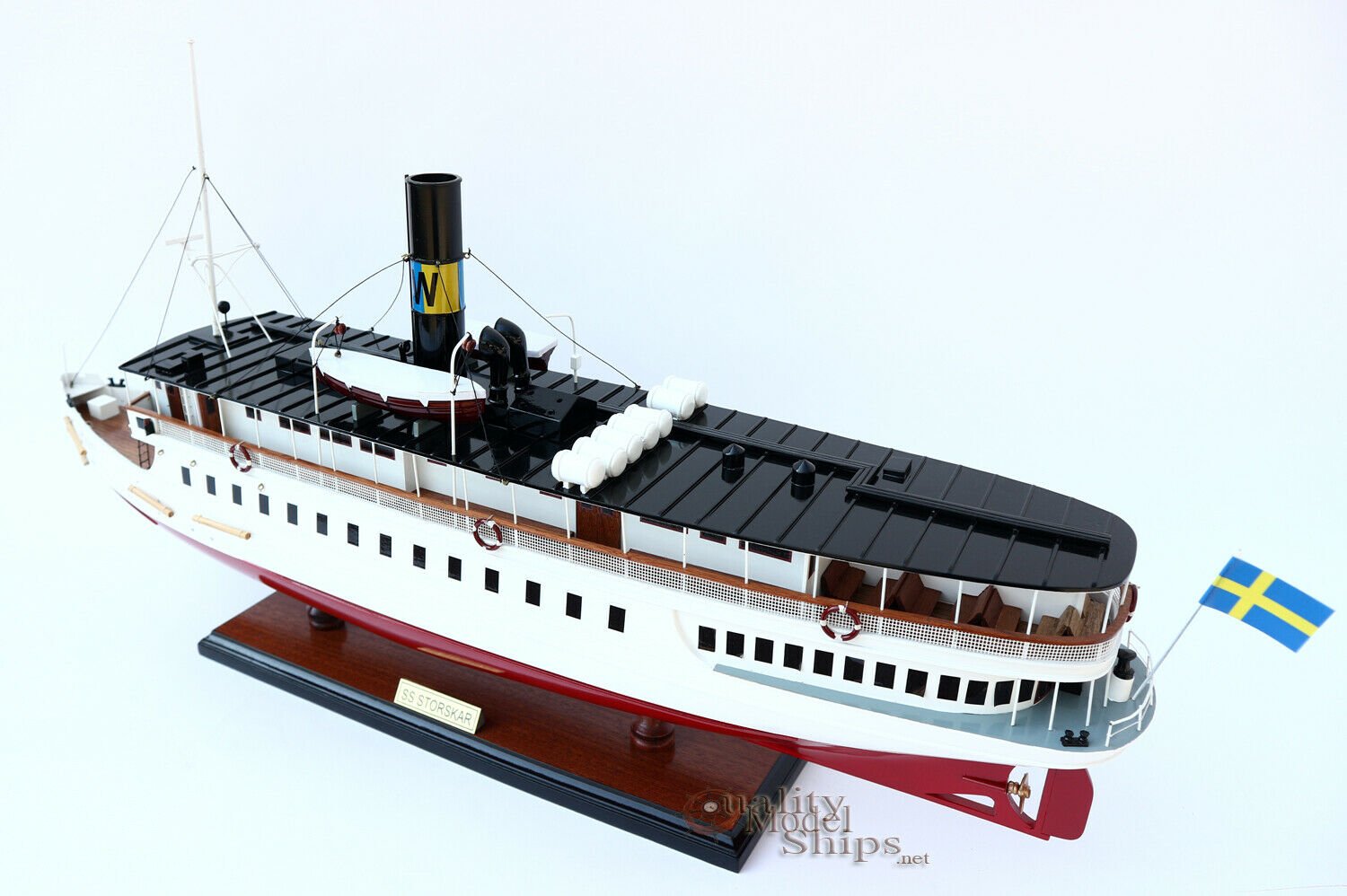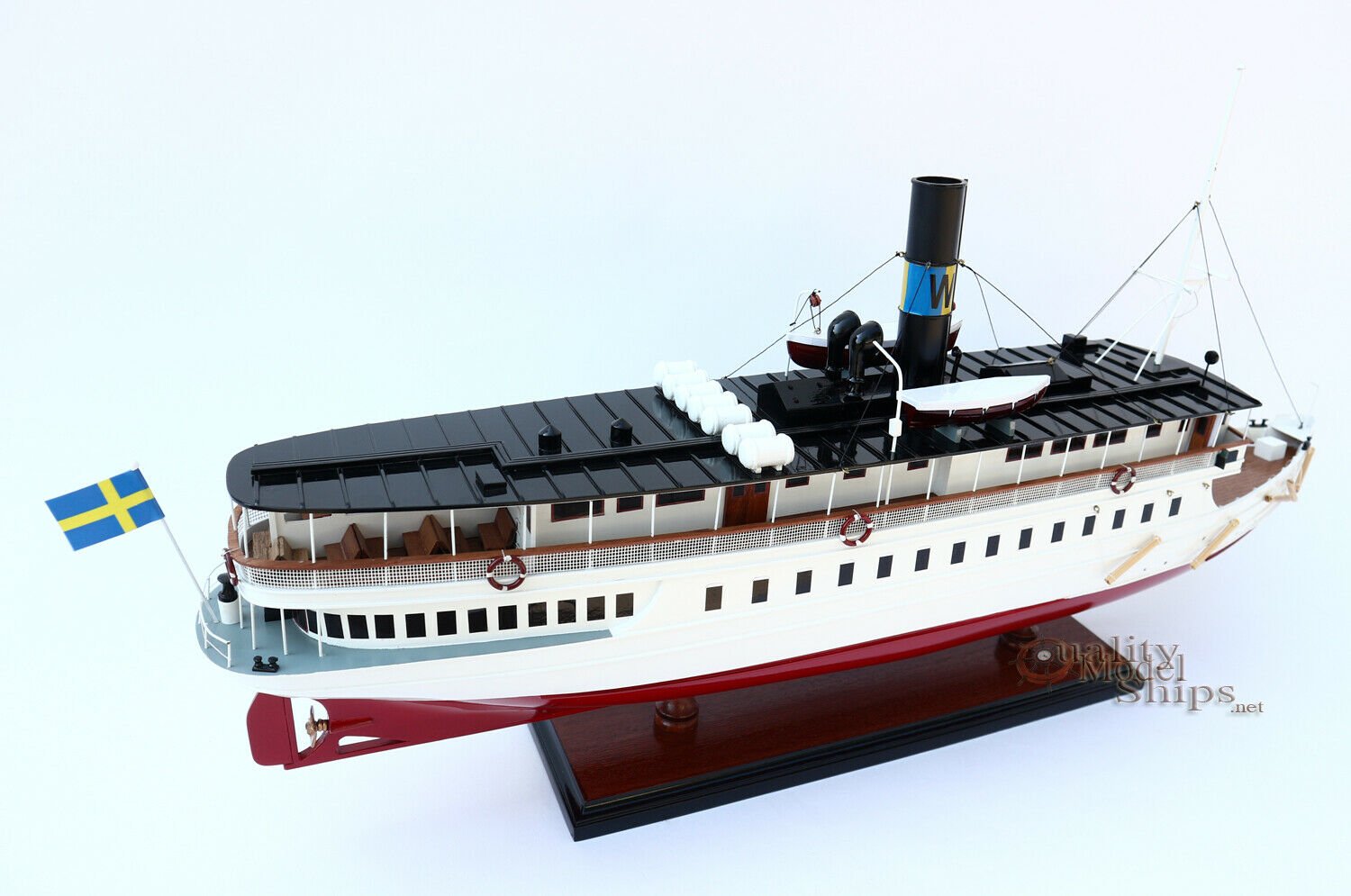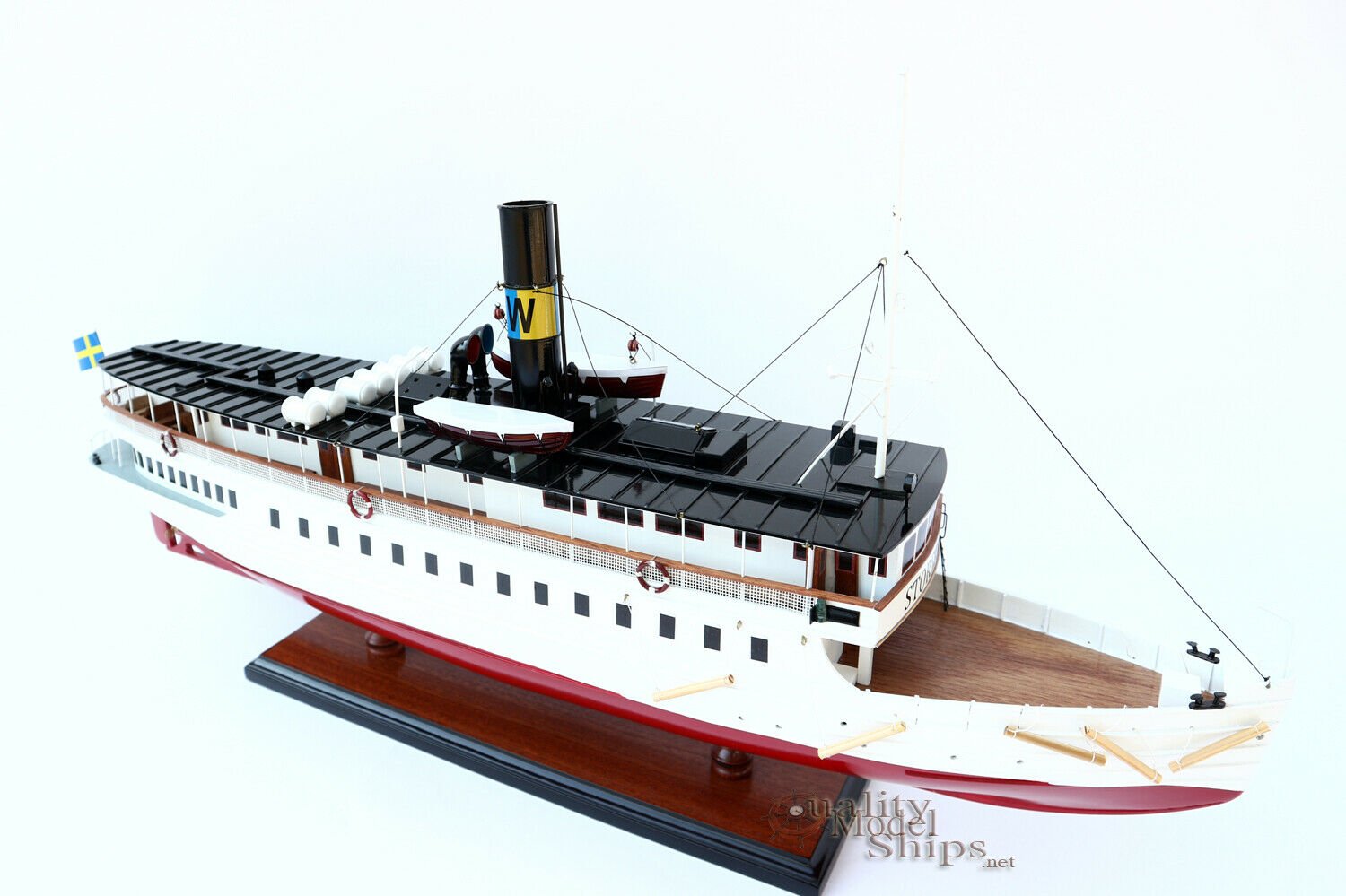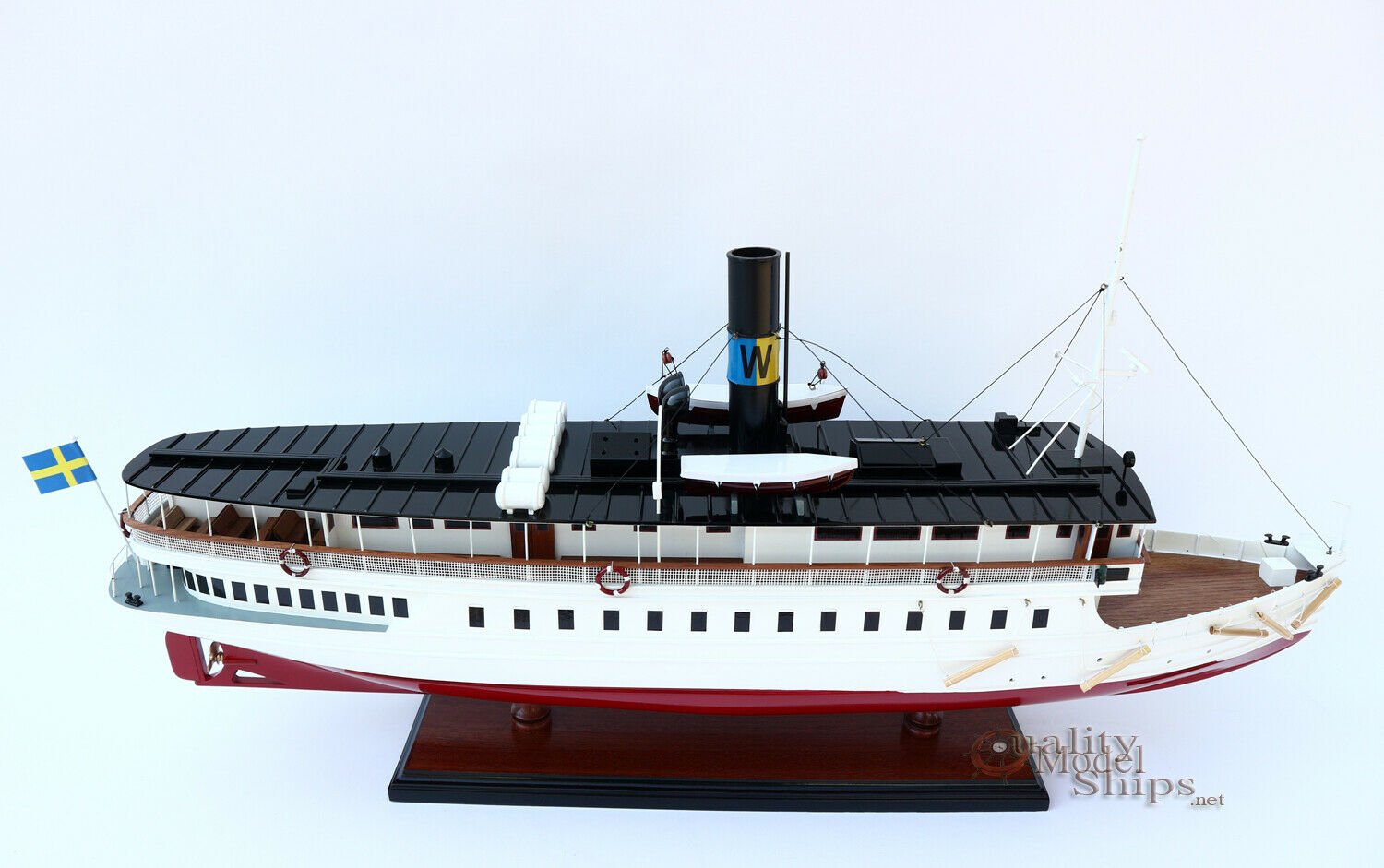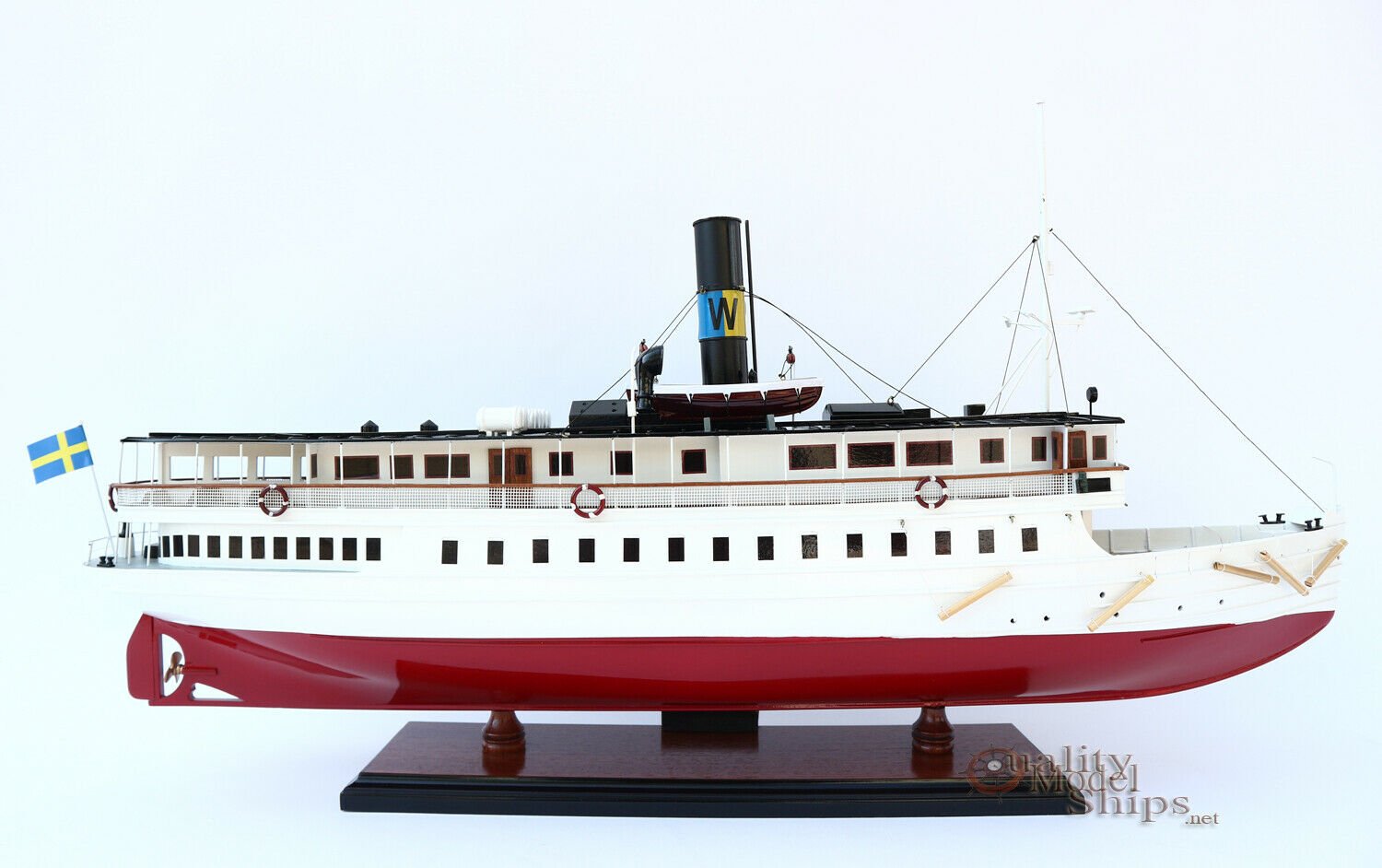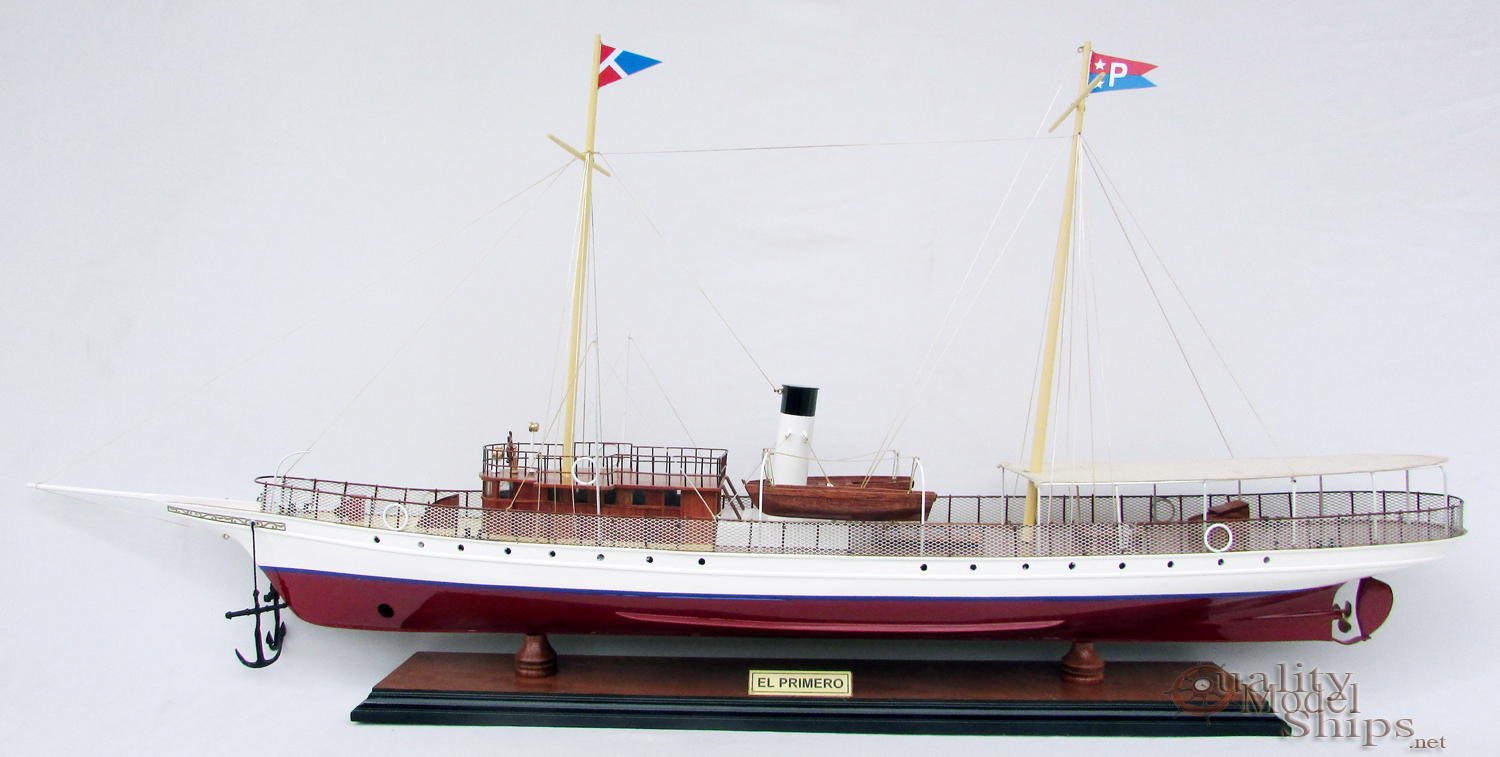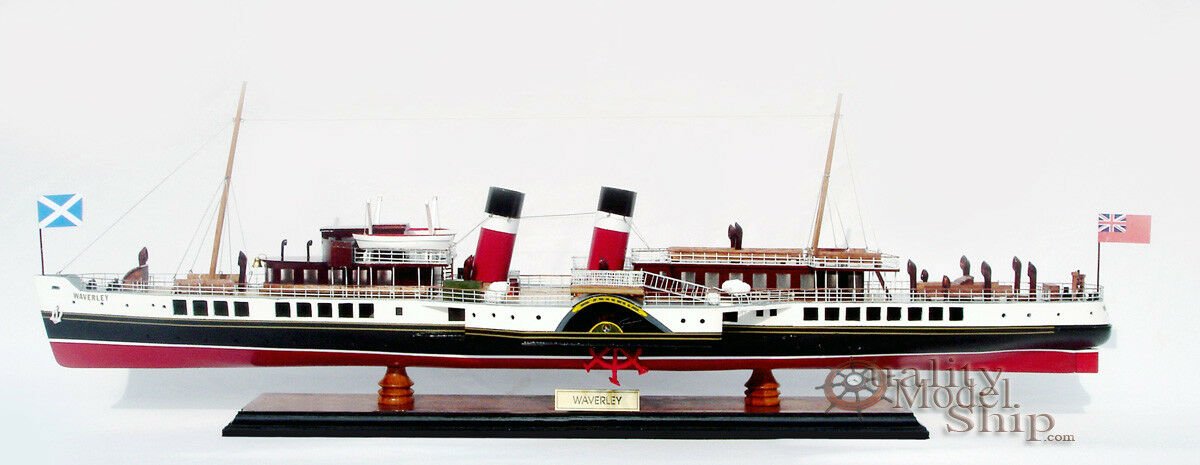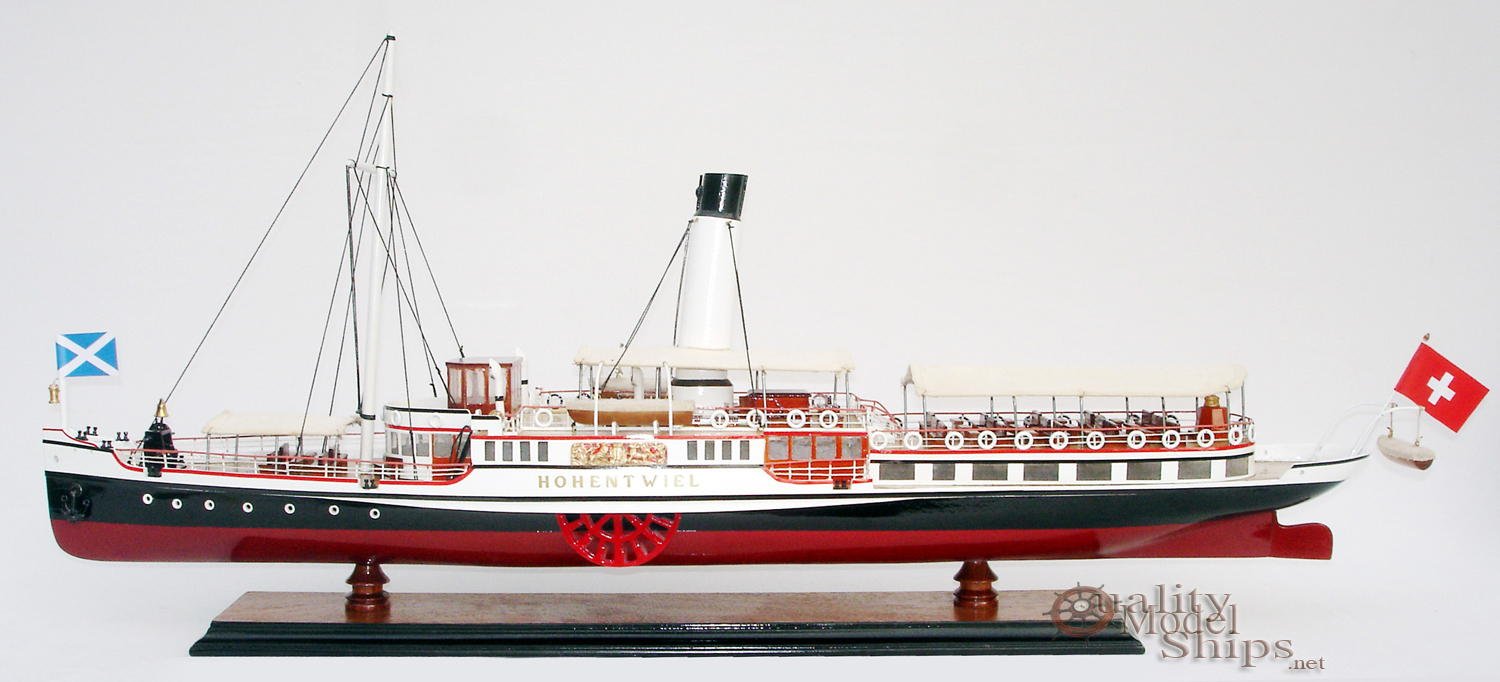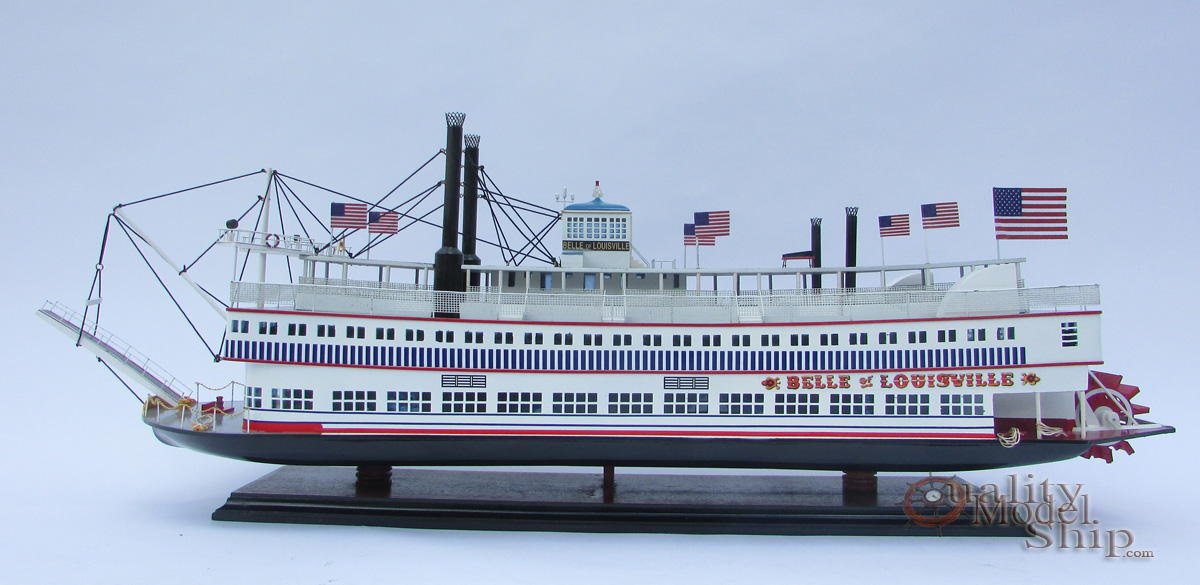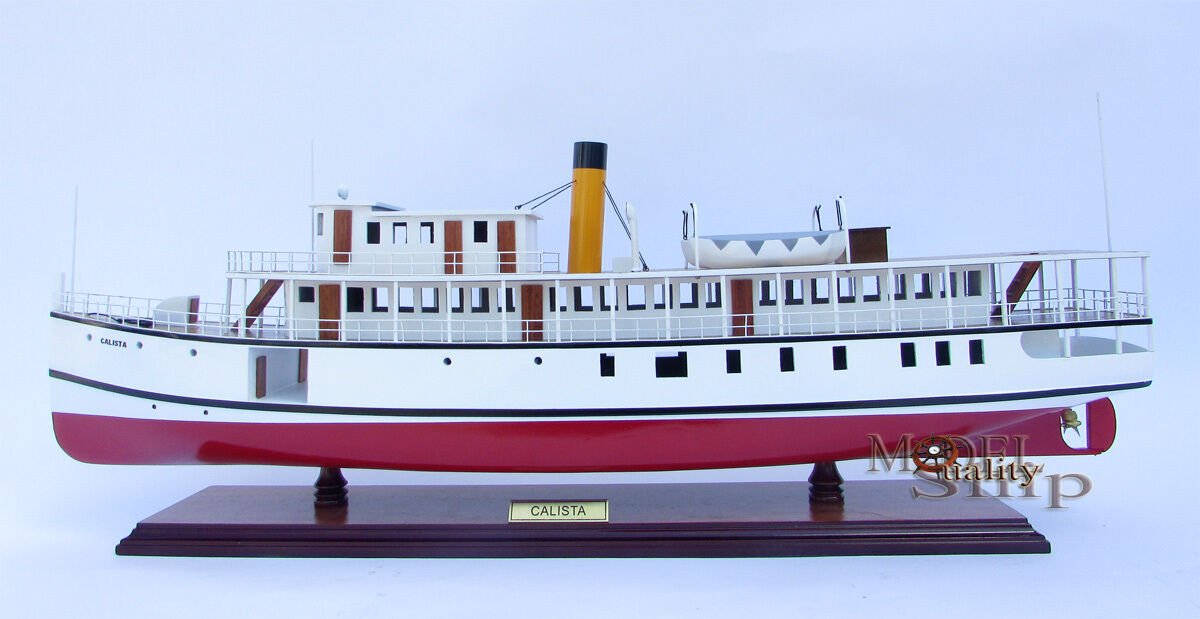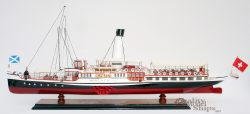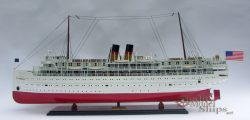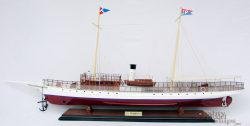| Content |
- The model is 100% scratch built with planks on frame construction method from the drawings.
- The hull is made of wood and painted. This model is not a kit and ready for display.
- Model comes with a display base and a brass name plate as shown photos.
- Specifications: 27.55L x 5.11W x 12.59H (inch) or 70L x 13W x 32H (cm)
- Brand new product. Buyer from Alaska, Puerto Rico or Hawaii please contact us for extra shipping cost.
- Oversea buyers pay any import tax.
HISTORY
The coal-fired steamship Mariefred was built in 1903 for the route Stockholm-Mariefred. Ever since, she has been sailing this route, under the same name, with few changes onboard, and with the same steam engine. Length 32.84 metres, width 6.33 metres, speed 10 knots, a 295 hp compound steam engine, 230 passengers. Since 1905, s/s Mariefred is owned by the company Gripsholms-Mariefreds Ångfartygs AB.
Return/ Enchange Policy
• For some reasons if you wish to return the item, please consider not to open the item out of the wooden crate or open the item out of the styrofoam. You can open the carton box, lift up the whole wooden crate and check the models that are packed in wooden crate. For the items are packed in solid styrofoam, you can open the carton box, lift up the top part (styrofoam lid) and check the model. Please do not cut any strips or take the model out of the wooden crate or out of the styrofoam. It is very risky of damages to the item when you return if you open or remove the item out of the wooden crate or the styrofoam. We only accept and refund in full when the model return in good shape.
• Returned or exchanged products must be in brand-new, original condition, and have all original packaging, materials, and accessories • Buyer pays return shipping.
• 15% restocking fee might apply.
| • The model is 100% scratch built with planks on frame construction method from the drawings.
• The hull is made of wood and painted. This model is not a kit and ready for display.
• Model comes with a display base and a brass name plate as shown photos.
• Specifications: 35L x 4.52W x 16.14H (inch) or 89L x 11.5W x 41H (cm)
• Brand new product. Buyer from Alaska, Puerto Rico, Hawaii or overseas, please contact us for shipping cost.
• Item ship from Houston Texas by Standard shipping USPS/ UPS/ FedEx ground
• International buyer pays any duty/ import tax if any.
HISTORY
El Primero was a steam yacht built in 1893. This vessel was
once considered one of the most luxurious yachts on the West
Coast of the United States, and was one of the few steam
yachts to be operated on Puget Sound. The yacht has since
been converted to diesel, but it remained operational as of
2010.Design and construction
El Primero, constructed at San Francisco, California, was
the first steam yacht built on the west coast of the United
States. The yacht had an auxiliary sail rig. The steam
engine was rated at horsepower, driving the vessel at a
maximum speed of 13.5 knots.
Career
The yacht's original owner was Edward W. Hopkins, heir to
the wealth of his uncle, Mark Hopkins, for whom the Mark
Hopkins Hotel is named. In 1896 Hopkins was the member of
the San Francisco and the Pacific yacht clubs.
In 1906 Hopkins sold the yacht to Chester Thorne of Tacoma,
and the yacht thereafter came to be based in Puget Sound.
Thorne in turn wagered the yacht in a craps game and lost
the game, and the yacht, to Sidney Albert “Sam” Perkins
(1865-1955), a newspaper publisher. El Primero transported
four different presidents, including for example William
Howard Taft when he came to Seattle to visit the
Alaska-Yukon-Pacific Exposition in 1909.
During World War II the yacht was taken into the U.S. Navy
as a patrol vessel, and returned to Perkins in 1947. During
the 1950s, there were only two steam yachts operational on
Puget Sound, El Primero and Aquilo.
After Perkins' death in 1955, the yacht went to his heirs
and was later purchased by Sy Devening who was doing
business as Puget Sound Excursion Lines, who converted it to
diesel power. The yacht passed through two subsequent
owners, an American (Arther B Church) and a Canadian, and
was taken out of service in the year 2000, remaining at a
dock in Blaine, Washington.
In 2010, the yacht was purchased by a semi-retired tug
captain and engineer. Encountering engine troubles, the new
owner had the vessel hauled out at Port Townsend for
repairs. With the vessel still in need of restoration, as of
January 2010 the new owner was considering taking the yacht
to Mexico or Thailand to have the work done. 2013 Ship
proudly berthed and displayed at Bremerton, Washington
Marina for maintenance, tours, and public functions.
Return/ Exchange Policy
• For some reasons if you wish to return the item, please consider not to open the item out of the wooden crate or open the item out of the styrofoam. You can open the carton box, lift up the whole wooden crate and check the models that are packed in wooden crate. For the items are packed in solid styrofoam, you can open the carton box, lift up the top part (styrofoam lid) and check the model. Please do not cut any strips or take the model out of the wooden crate or out of the styrofoam. It is very risky of damages to the item when you return if you open or remove the item out of the wooden crate or the styrofoam. We only accept and refund in full when the model return in good shape.
• Returned or exchanged products must be in brand-new, original condition, and have all original packaging, materials, and accessories .
• Buyer pays return shipping.
• 15% restocking fee might apply.
|
- The model is 100% scratch built with planks on frame construction method from the drawings.
- The hull is made of wood and painted. This model is not a kit and ready for display.
- Model comes with a display base and a brass name plate as shown photos.
- Specifications: 31.49"L x 6.69"W x 11.02"H or 80L x 17W x 28H (cm)
- Brand new product. Buyer from Alaska, Puerto Rico or Hawaii please contact us for extra shipping cost.
- Oversea buyers pay any import tax.
|
- The model is 100% scratch built with planks on frame construction method from the drawings.
- The hull is made of wood and painted. This model is not a kit and ready for display.
- Model comes with a display base and a brass name plate as shown photos.
- Specifications: 29.13L x 6.69W x 12.99H (inch) or 74L x 17W x 33H (cm)
- Brand new product. Buyer from Alaska, Puerto Rico or Hawaii please contact us for extra shipping cost.
- Oversea buyers pay any import tax.
HISTORY
The royal steamship since 1913.
Probably the most beautiful historic paddle wheel steamer on the
whole of the continent plies its way across Central Europe’s
third largest inland lake with radiantly white awnings, polished
brass and reflective mahogany and with teak and cherry wood
fittings. The trade press have called it “Europe’s most superbly
restored steamship” and it certainly symbolises all the
craftsmanship of a long forgotten age. Each detail features
masterpieces of art nouveau. Everything on board the Hohentwiel
blends into an authentic whole. The completely faithful
restoration recalls the steamship’s glorious heyday as a
luxurious paddle steamer for crowned heads of state.
Return/ Exchange Policy
• For some reasons if you wish to return the item, please consider not to open the item out of the wooden crate or open the item out of the styrofoam. You can open the carton box, lift up the whole wooden crate and check the models that are packed in wooden crate. For the items are packed in solid styrofoam, you can open the carton box, lift up the top part (styrofoam lid) and check the model. Please do not cut any strips or take the model out of the wooden crate or out of the styrofoam. It is very risky of damages to the item when you return if you open or remove the item out of the wooden crate or the styrofoam. We only accept and refund in full when the model return in good shape.
• Returned or exchanged products must be in brand-new, original condition, and have all original packaging, materials, and accessories .
• Buyer pays return shipping.
• 15% restocking fee might apply.
|
- The model is 100% scratch built with planks on frame construction method from the drawings.
- The hull is made of wood and painted. This model is not a kit and ready for display.
- Model comes with a display base and a brass name plate as shown photos.
- Specifications: 28.74"L x 6.69"W x 11.81"H or 73L x 17W x 30H (cm)
- Brand new product. Buyer from Alaska, Puerto Rico or Hawaii please contact us for extra shipping cost.
- Oversea buyers pay any import tax.
HISTORY
Belle of Louisville is a
steamboat owned and operated by the city of Louisville,
Kentucky, and moored at its downtown wharf next to the
Riverfront Plaza/Belvedere during its annual operational
period. Originally named Idlewild, she was built by James
Rees & Sons Company in Pittsburgh, Pennsylvania, for the
West Memphis Packet Company in 1914 and was first put into
service on the Allegheny River. Constructed with an
all-steel superstructure and asphalt main deck, the
steamboat is said to hold the all-time record in her class
for miles traveled, years in operation, and places visited.
Belle of Louisville's offices are aboard Mayor Andrew
Broaddus, also a National Historic Landmark.
Return/ Enchange Policy
• For some reasons if you wish to return the item, please consider not to open the item out of the wooden crate or open the item out of the styrofoam. You can open the carton box, lift up the whole wooden crate and check the models that are packed in wooden crate. For the items are packed in solid styrofoam, you can open the carton box, lift up the top part (styrofoam lid) and check the model. Please do not cut any strips or take the model out of the wooden crate or out of the styrofoam. It is very risky of damages to the item when you return if you open or remove the item out of the wooden crate or the styrofoam. We only accept and refund in full when the model return in good shape.
• Returned or exchanged products must be in brand-new, original condition, and have all original packaging, materials, and accessories .
• Buyer pays return shipping.
• 15% restocking fee might apply.
| • The model is 100% scratch built with planks on frame construction method from the drawings.
• The hull is made of wood and painted. This model is not a kit and ready for display.
• Model comes with a display base and a brass name plate as shown photos.
• Specifications: 27.55"L x 4.33"W x 11"H or 70L x 11W x 28H (cm)
• Brand new product. Buyer from Alaska, Puerto Rico, Hawaii or overseas, please contact us for shipping cost.
• Item ship from Houston Texas by Standard shipping USPS/ UPS/ FedEx ground
• International buyer pays any duty/ import tax if any.
HISTORY
(source southwhidbeyhistory)
The Calista, at 117 feet long and 105 tons, was constructed in Washington State in 1911. She was one of the small, wooden, passenger ferries common among the early Puget Sound Mosquito Fleet. A large number of private transportation companies ran small passenger and freight boats on Puget Sound, nearby waterways as well as local rivers. They were a varied group of steamers and stern wheelers that plied the waters of Puget Sound on an actual schedule and generally stopped at every waterfront dock.
On July 27, 1922, the ferry Calista departed Oak Harbor on her scheduled run, pulled into Coupeville, again at Langley, Clinton, and finally Glendale before heading to market in Seattle. One particular South Whidbey passenger on board that fateful day was Mrs. Margaret McLeod, mayor of Langley. She was accompanied by her coop full of chickens.
With a final total of 70 souls on board, Calista became enveloped in a thick fog as she approached West Point to enter Elliot Bay. It was then, at approximately 10:40 AM, the steamship Hawaiian Maru rammed the Calista which sank to the bottom 28 minutes later. Directly after the moment of collision, the Mayor of Langley fainted. Due to the noble efforts of Captain Bert Lovejoy, Purser R. McGinnis, Ships Mate Ole Swenson and Chief Engineer R. H. Kimmel of the Calista, no lives were lost and all passengers and crew were evacuated to Seattle. The postal mail from all 4 towns, and the chickens, however, were lost.
Early Navigation
The two greatest fears for any sailor are either a shipboard fire or flooding. For the Mosquito Fleet, if a fire broke out they could try to buy themselves time, by beaching the boat and removing all passengers in a relatively safe manner. Flooding, however, can be caused by an engineering casualty, but more commonly by a collision at sea.
Collisions were not uncommon when steamboats had to operate in fog or night. Up until 1945, when the LORAN (Long Range Aid to Navigation) system was established, navigation was a high-risk affair. Seamanship was an art forged from experience and sound decision making. In today’s navigational environment with instrumentation as sophisticated as radar, depth-sonar and GPS (global positioning system), risks are exponentially less.
Collisions in the 19th and early 20th century came suddenly, and destruction could be quick. This is especially the case when there is a difference in size between vessels, or wooden versus steel hull construction. Traffic, fog and geography is, to this day, a hazard for any helmsman.
The steamboats could not stop running at night or in bad weather. Heavy fog was particularly hazardous, and could come up any time of year. While there was no radar, Captains became expert at rudimentary sonar. They could fix their position using the echo of the steamboat whistle. Since sound travels at 1,080 feet per second, and if an echo was heard one second after the whistle blast, the Captain could calculate the steamboat was conservatively 500 feet from shore. The maritime historian Jim Faber summarized how pilots on the Bridge could roughly measure echo location:
“Experienced navigators not only could estimate how far they were from shore, but also could determine their position by the sound of the echo. This was in spite of the fact that a low shoreline, a high bank, or even a gravel beach can all return a different sound. Another determinant was the length of the echo. A short echo denoted a narrow island or headland, for most of the energy of the whistle continued by on both sides. In only a few seconds, the navigator had to also decide whether the echo was bouncing from floating logs, buoys — or even a solid fog bank.”
This is why it took a Captain years of navigational experience on a particular route to safely pilot the boat through a fog bank, or into a dark rainy night.
Puget Sound Collisions
Elliot Bay off Seattle was the site of a number of maritime disasters. On the night of November 18, 1906, the passenger steamer Dix (102 feet long at 130 ton), had been designed specifically for very short runs such as its unscheduled transit across Elliott Bay. In steaming from Seattle to Alki Point, it collided with the much larger, 4 masted steam schooner, Jeanie (186 feet long at 1,000 ton). The collision, on a clear night full of stars, may have been due to the error of Dix’s unlicensed mate who was at the wheel. Even though the collision speed was slow, Dix was top-heavy. She heeled over, filled with water, and sank 103 fathoms to the bottom. Forty-five people, including the mate and the Chief Engineer went down with her. The wreck was so deep that no bodies could be practically recovered.
A similar collision, again in Elliot Bay, occurred on October 28, 1911. Fortuitously, there was no loss of life, however, this collision is significant because of the obvious standoff between a heavy, steel hulled vessel and a light, wooden hulled sternwheeler. Multnomah was rammed by the much larger steel-hulled express passenger Iroquois on October 28, 1911, resulting in the sinking of Multnomah in 240 feet of water. The Multinomah was built in Portland, Oregon in 1885, and was 143 feet long at 313 tons. The 214 foot long Iroquois, on the other hand, was built in Toledo, Ohio in 1901 and sat in the water at 1,169 tons.
Return/ Exchange Policy
• For some reasons if you wish to return the item, please consider not to open the item out of the wooden crate or open the item out of the styrofoam. You can open the carton box, lift up the whole wooden crate and check the models that are packed in wooden crate. For the items are packed in solid styrofoam, you can open the carton box, lift up the top part (styrofoam lid) and check the model. Please do not cut any strips or take the model out of the wooden crate or out of the styrofoam. It is very risky of damages to the item when you return if you open or remove the item out of the wooden crate or the styrofoam. We only accept and refund in full when the model return in good shape.
• Returned or exchanged products must be in brand-new, original condition, and have all original packaging, materials, and accessories .
• Buyer pays return shipping.
• 15% restocking fee might apply.
|
